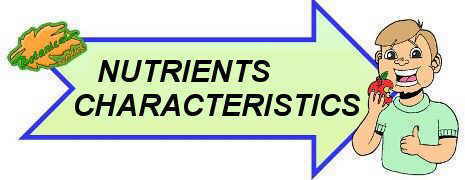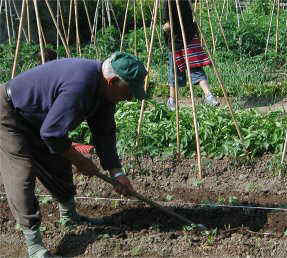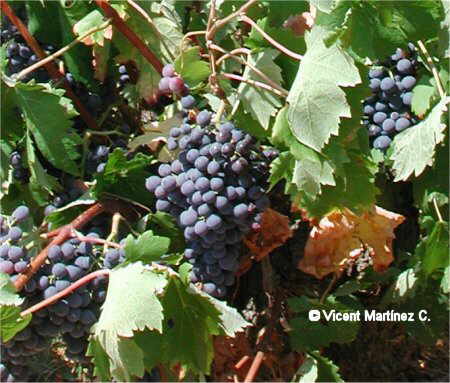Contents
- 1 How to explain what legumes are to school-age children
- 1.1 PROPERTIES OF LEGUMES FOR CHILDREN
- 1.2 What are legumes?
- 1.3 What types of legumes are there?
- 1.4 Why are legumes important in the diet?
- 1.5 Benefits of legumes for health
- 1.6 How much is a serving of legumes?
- 1.7 Myths about legumes
- 1.8 Which legumes are the most appropriate?
- 1.9 How many legumes should we eat daily?
- 1.10 Recipes with legumes
How to explain what legumes are to school-age children
PROPERTIES OF LEGUMES FOR CHILDREN
What are legumes?
Legumes or pulses are foods that come from the fruit of plantas from pea-family (Leguminosae or Fabaceae) , a type of pod-bearing plants.
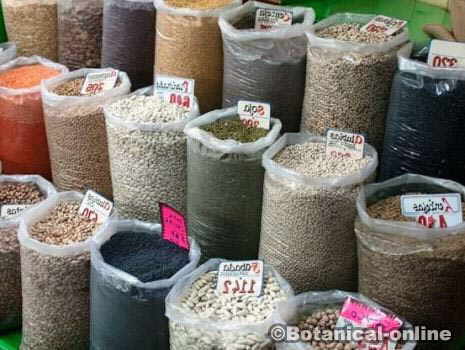
Photo of legumes in a market, there are many types and varieties
What types of legumes are there?
Among the main legumes we have, for example:
Tofu and tempeh, two derivatives of soy, also fall into the group of legumes.
Why are legumes important in the diet?
Legumes are very important in food because they provide energy and, above all, many proteins, minerals and vitamins. They also contain a lot of fiber.
Legumes contain carbohydrates, although not as many as rice, pasta or potatoes.
Among vitamins, which pulses contain it is, especially: vitamin B9 or folic acid, and in general all vitamins of group B (except vitamin B12, which is of animal origin).
Legumes are very rich in minerals, especially in potassium, phosphorus, calcium and magnesium. It is interesting to know that calcium is not found in meats, therefore, an advantage of legumes over meat is that they provide proteins, but with more calcium than meat.
Therefore, legumes provide many nutrients that are necessary for our body to function properly.

Summary sheet of vegetables for children. Example of exercise of nutritional education in schools, when talking about these healthy foods
Benefits of legumes for health
Among the benefits or strengths of these foods are:
- That they are very rich in proteins
- A legume dish has so much protein, that it can replace the meat of a meal
- Very rich in calcium, for bones
- Very rich in phosphorus, for the brain
- Very rich in magnesium, for sports
- Rich in fiber, to go to the bathroom
- It has been seen that those who consume more legumes have less obesity and diabetes
How much is a serving of legumes?
A portion of legume is a plate of legumes. In weight or grams, this equals roughly 50 grams of raw legume, which when hydrated and cooked is multiplied by more than double: about 120 grams of legumes.
Myths about legumes
There are many myths and doubts about these foods, which can be solved quickly or develop one by one:
- Are legumes good for diabetes? Yes, it is very good that people with diabetes eat more legumes in their diet
- Do legumes have a lot of calories? No, just the opposite: eating vegetables helps control obesity. To lose weight, it is better to eat legumes than pasta.
- Do legumes produce a lot of gases? No, it is normal for legumes to be tolerated as well as rice.
- Do legumes have sugar? It is false that legumes have “sugar”, since they contain complex carbohydrates and also a lot of fiber and proteins. Eating legumes will never produce hyperglycemia, even if you eat two dishes!
- Is it bad to eat legumes every day? You can eat every day or almost every day without problems. In fact, it is better to eat more legumes because it prevents many diseases
- Does soy milk count as a legume? Soy drink has very little soy and does not count as a legume ration. The nutritional value of a glass of soy drink is very different from that of a legume dish.
Which legumes are the most appropriate?
All legumes are important and it is convenient to eat all of them. Among all legumes, those that are easier to digest are chickpeas, lentils and peas.
- Vegetarians should eat legumes daily. Legumes, combined with cereals, provide high quality proteins.
How many legumes should we eat daily?
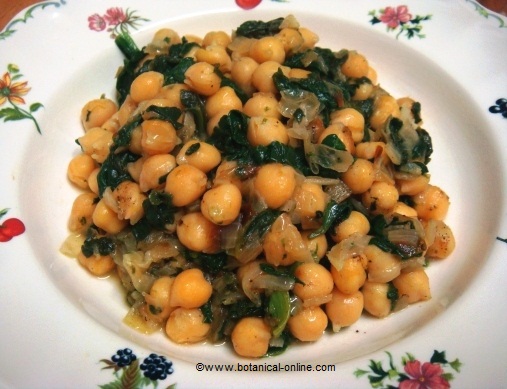
Photography chickpeas with spinach
We should eat legumes at least 3 days a week, but it is recommended to eat them even more frequently.
Recipes with legumes
There are many legumes recipes that we can introduce them in or diet. For example:
| TO REMEMBER: LEGUMES |
|
![]() More information on nutrition.
More information on nutrition.

